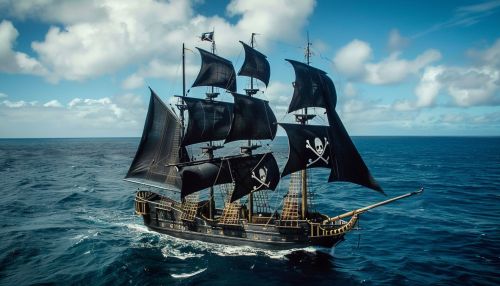The Pyrates
Introduction
"The Pyrates" is a term that encompasses various historical, cultural, and literary representations of pirates. This article delves into the multifaceted dimensions of piracy, examining its origins, evolution, and impact on society. The focus will be on the historical context, notable figures, cultural depictions, and the socio-economic implications of piracy.
Historical Context
Early Piracy
Piracy has existed since ancient times, with early records dating back to the 14th century BCE. The Sea Peoples were among the first known pirates, terrorizing the Mediterranean. During the Classical Antiquity period, piracy was rampant in the Aegean and Ionian Seas, with notable pirates such as the Illyrians and Cilicians.
Golden Age of Piracy
The Golden Age of Piracy (1650-1730) is the most famous era, characterized by notorious figures and significant maritime activity. This period saw the rise of infamous pirates like Blackbeard (Edward Teach), Bartholomew Roberts, and Henry Morgan. The decline of Spanish power and the increase in maritime trade created opportunities for piracy to flourish.


Decline and Suppression
By the early 18th century, increased naval patrols and legal measures led to the decline of piracy. The Treaty of Utrecht (1713) and the establishment of the Royal Navy played crucial roles in suppressing pirate activities. The execution of prominent pirates, such as Blackbeard in 1718, marked the end of the Golden Age.
Notable Pirates
Blackbeard (Edward Teach)
Blackbeard is perhaps the most iconic pirate of the Golden Age. Known for his fearsome appearance and ruthless tactics, he commanded the ship Queen Anne's Revenge. His reign of terror in the Caribbean and along the American coast ended with his death in a battle with British naval forces.
Bartholomew Roberts
Bartholomew Roberts, also known as Black Bart, was one of the most successful pirates, capturing over 400 ships. His strict code of conduct and strategic acumen made him a formidable adversary. Roberts' death in 1722 marked a significant blow to piracy.
Anne Bonny and Mary Read
Anne Bonny and Mary Read were among the few female pirates who gained notoriety. Disguised as men, they served under the pirate Calico Jack and participated in numerous raids. Their capture and subsequent trial highlighted the presence of women in piracy.
Cultural Depictions
Literature
Piracy has been a popular theme in literature, with works like Robert Louis Stevenson's "Treasure Island" and J.M. Barrie's "Peter Pan" shaping the romanticized image of pirates. These stories often depict pirates as adventurous and rebellious figures, contributing to their enduring allure.
Film and Television
Pirates have been a staple in film and television, with iconic portrayals in movies like "Pirates of the Caribbean" and "Captain Blood." These adaptations have further cemented the image of pirates in popular culture, blending historical facts with fictional elements.
Video Games
The video game industry has also embraced piracy, with titles like "Assassin's Creed IV: Black Flag" and "Sea of Thieves" offering immersive pirate experiences. These games explore the complexities of pirate life, from naval battles to treasure hunts.
Socio-Economic Impact
Maritime Trade
Piracy significantly impacted maritime trade, disrupting shipping routes and causing financial losses. The threat of pirate attacks led to the development of naval escorts and fortified ports. Insurance premiums for merchant ships also increased, reflecting the heightened risks.
Legal and Political Responses
Governments responded to piracy with various legal and political measures. The Piracy Act 1698 and subsequent laws aimed to curb pirate activities through harsh penalties. International cooperation, such as the Treaty of Madrid (1670), facilitated joint efforts to combat piracy.
Modern Piracy
While the Golden Age has long passed, piracy persists in modern times, particularly in regions like the Horn of Africa and the Strait of Malacca. Contemporary pirates employ advanced technology and tactics, posing significant challenges to international security.
See Also
- Sea Peoples
- Illyrians
- Cilicians
- Blackbeard
- Queen Anne's Revenge
- Royal Navy
- Treaty of Utrecht
- Robert Louis Stevenson
- Pirates of the Caribbean
- Assassin's Creed IV: Black Flag
- Horn of Africa
- Strait of Malacca
References
[References will be added here if available]
